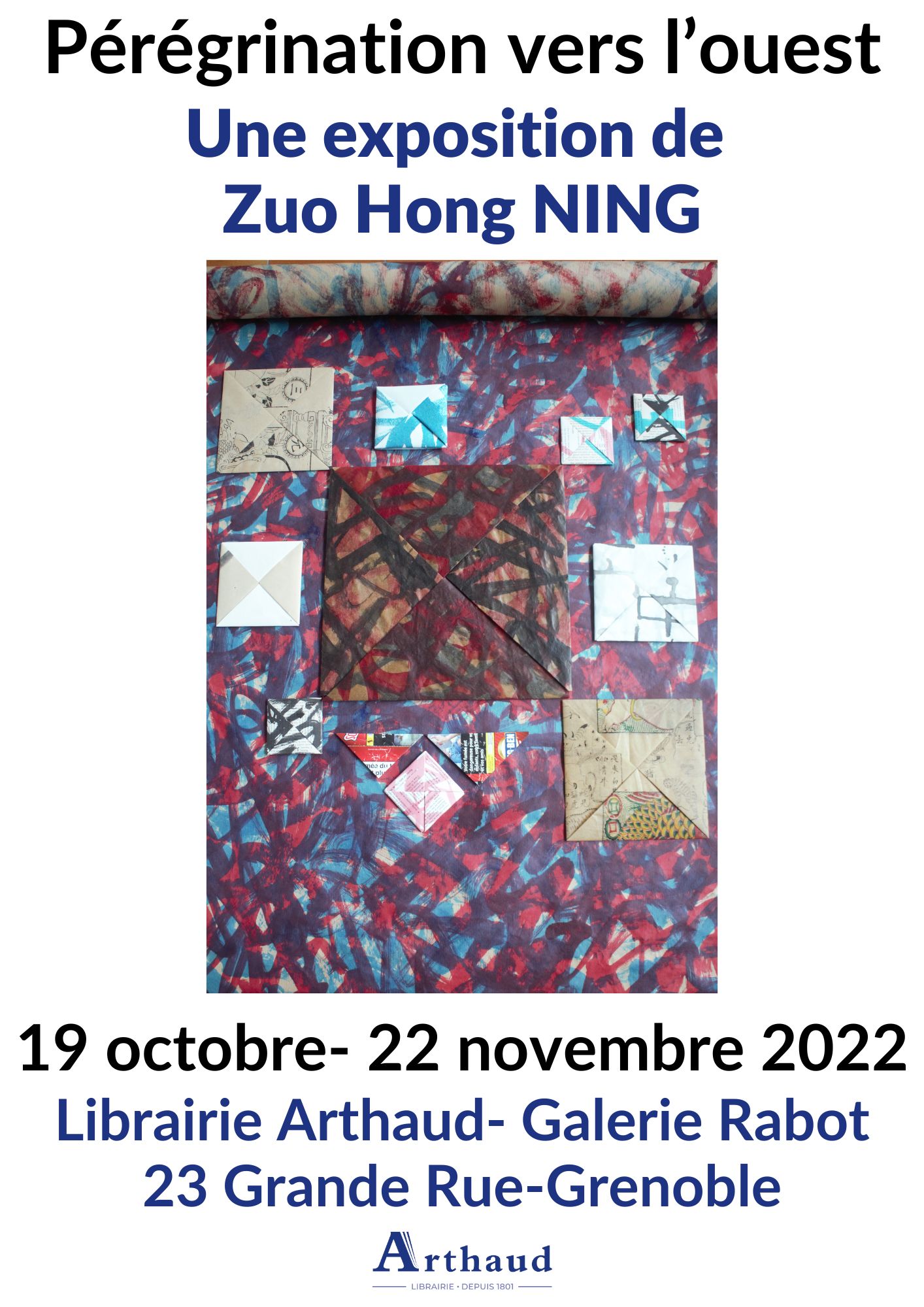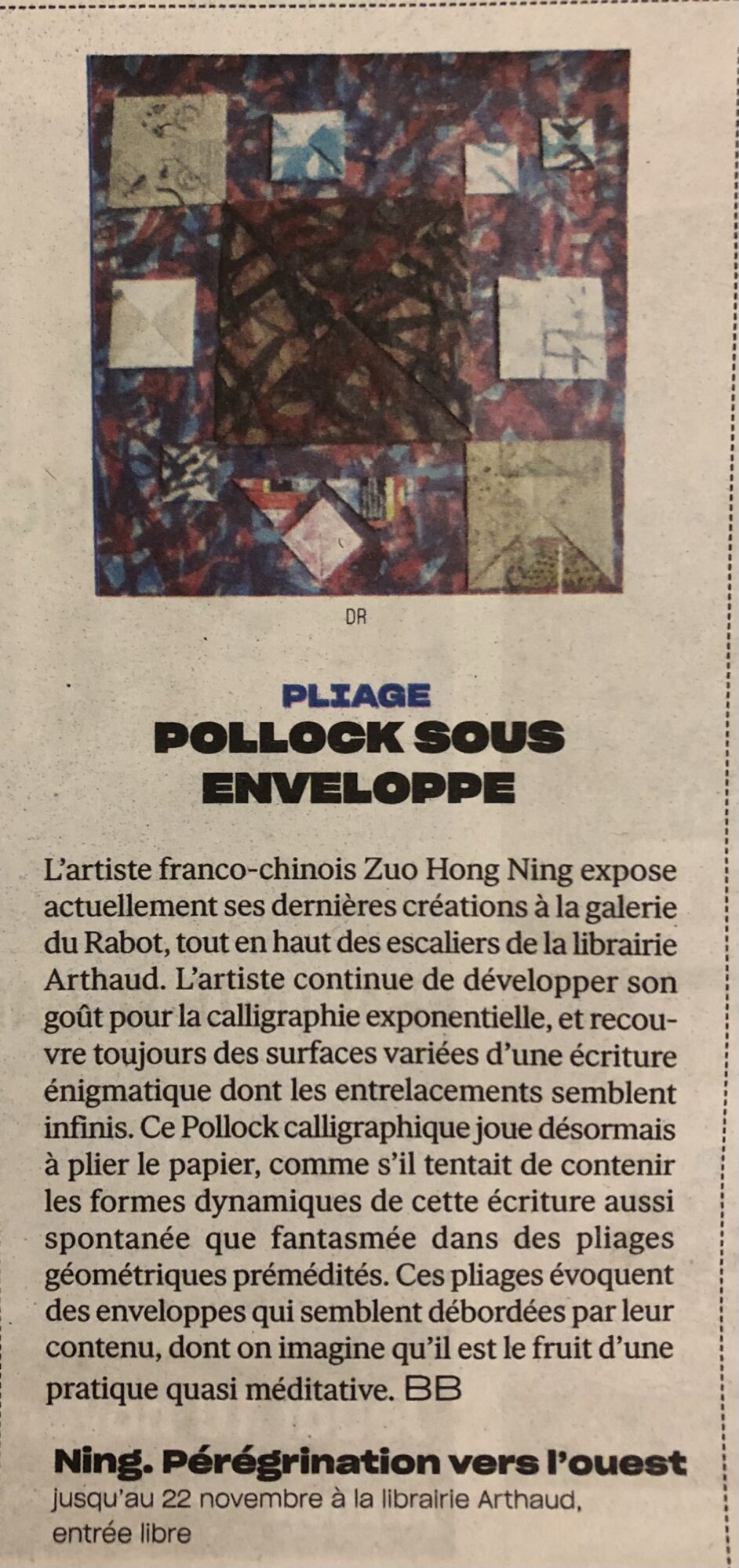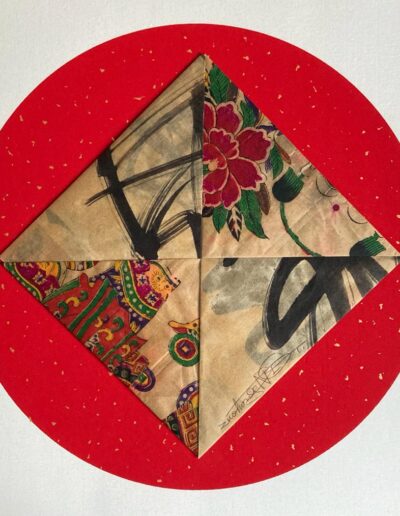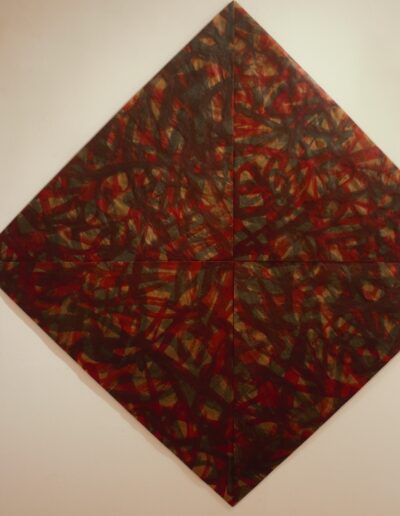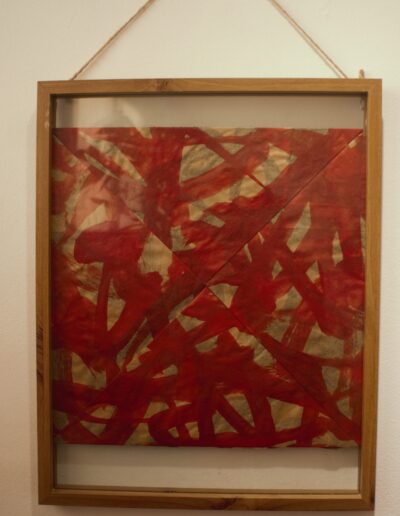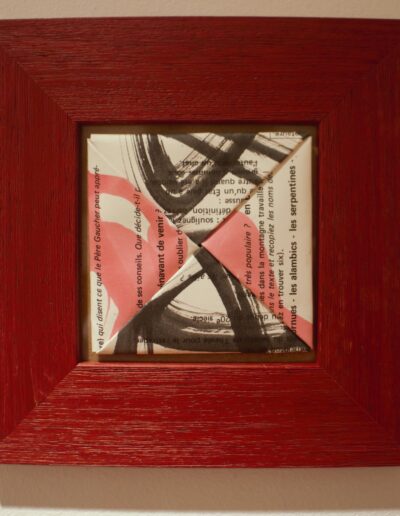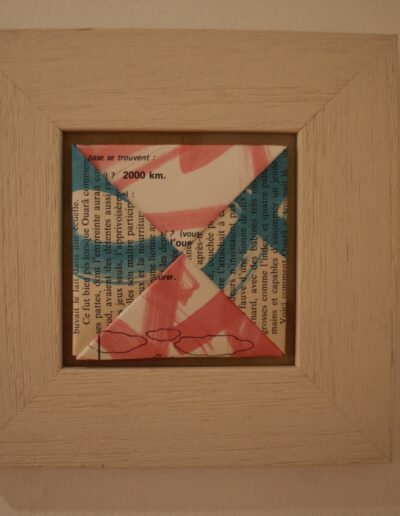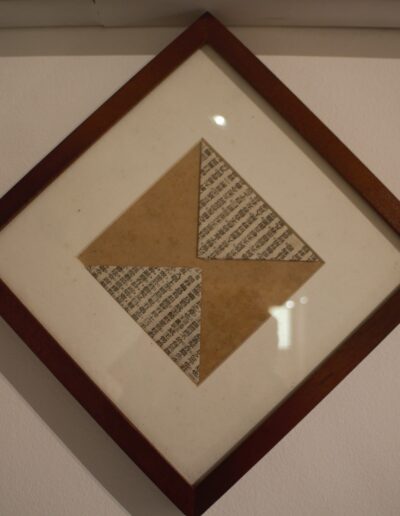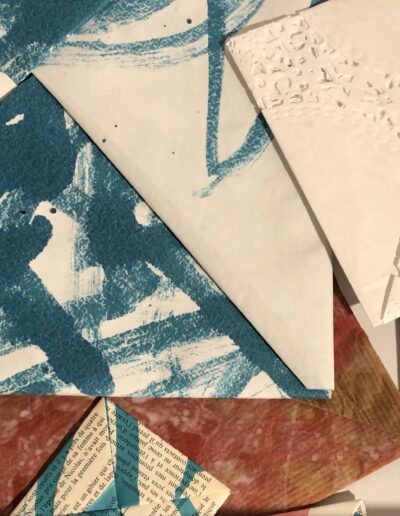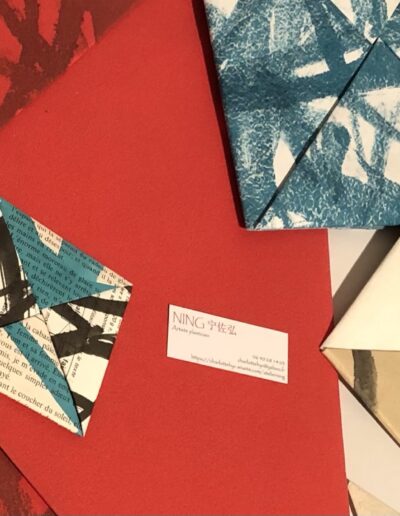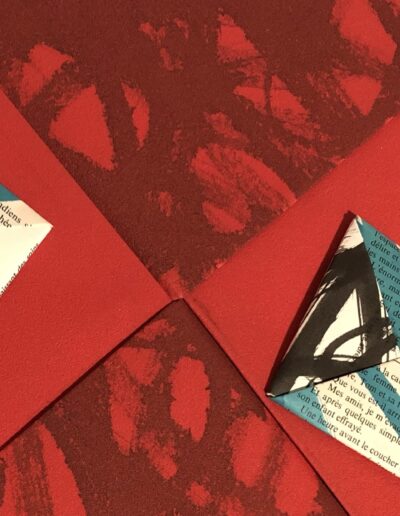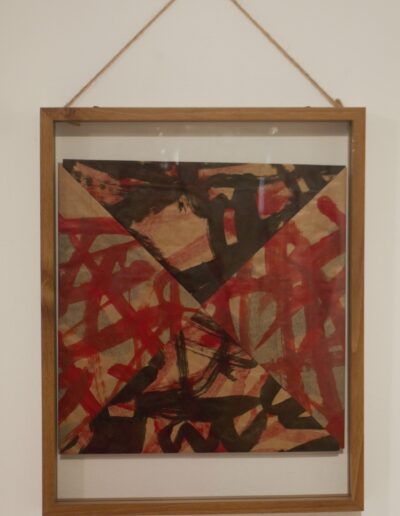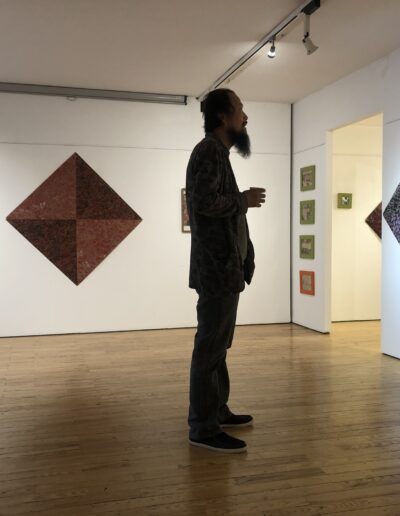Une exposition de Zuo Hong NING à la galerie Rabot de la librairie Arthaud
« […] quand on quitte son foyer pour des rivages inconnus, on ne continue pas tout simplement comme avant ; une partie de soi doit mourir à l’intérieur pour qu’une autre puisse tout recommencer. » (parole du figuier) Elif Shafak, L’île aux arbres disparus
En choisissant un titre de roman pour cette nouvelle exposition, Ning inscrit sa démarche dans la continuité des expositions précédentes, établissant des liens entre ses œuvres et les lieux d’exposition qui les accueillent.
Pérégrination vers l’Ouest renvoie au titre de l’un des quatre grands classiques de la littérature chinoise pré-moderne. Le roman fantastique de Wu Cheng En retrace l’expédition de Xuan Zang, moine bouddhiste qui se rendit en Inde pour en rapporter des textes religieux issus du bouddhisme Mahayana dans le but de les traduire en chinois.
La lecture de La pérégrination vers l’ouest a accompagné l’enfance de Ning. Quand il ne lisait pas, il jouait avec ses amis au « ban », ces papiers pliés en forme de carré et posés au sol qu’un joueur doit retourner avec son propre « ban » afin de gagner ceux de son adversaire.
Les œuvres de Ning en papier plié, tels des « ban » surdimensionnés, portent la trace de mantras bouddhiques, ceux-là mêmes rapportés d’Inde par Xuan Zang. En convoquant ses souvenirs d’enfance, Ning révèle la trace d’histoires et pratiques culturelles, constructrices d’identité. Un retour en arrière vers la Chine de son enfance qui le lie à l’ici et maintenant. Entre ancrage, dépaysement et repositionnement. Une identité en mouvement. Une identité comme mouvement.
Ses œuvres sont ainsi la marque du cheminement personnel de Ning, résultat d’une identité plurielle et pluraliste.
Peregrination to the West refers to the title of one of the four great classics of pre-modern Chinese literature. The fantastic novel by Wu Cheng retraces the expedition of Xuan Zang, a Buddhist monk who went to India to bring religious texts from Mahayana Buddhism in order to translate them into Chinese.
As a child, Ning used to read Peregrination to the West. When he did not read, he played with his friends at the « ban », these papers folded in the shape of a square and placed on the ground that a player must return with his own « ban » in order to win those of his opponent.
Ning’s folded papers are like oversized « ban » ; they bear the trace of Buddhist mantras, the one brought back from India by Xuan Zang. By summoning his childhood memories, Ning reveals the trace of cultural stories and practices, which contribute to construct identity. He takes a step back to the China of his childhood which binds him to the here and now. Between anchoring, change of scenery and repositioning. An identity in motion. An identity as a movement.
His works are thus the mark of the personal journey of Ning, the result of a plural and pluralist identity.

